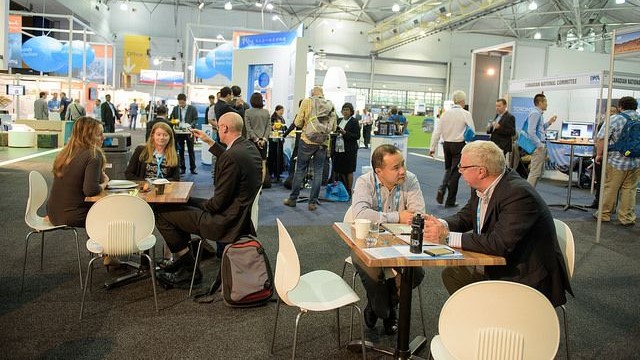Our world is becoming increasingly reliant on internet access – from day-to-day activities, work, travel and communication to banking, manufacturing and building automation, almost everything we do requires an internet connection.
But what does this have to do with water?
Researchers at Imperial College London found that every gigabyte (GB) of data we consume has a water footprint of up to 200 litres. In 2018, the average person used 2.9GB of data every month – by 2020 average monthly usage had increased to 4.5 GB. That’s a lot of water.
The problem is data centres – critical infrastructure that stores and processes information, allowing end-users to access it instantly and remotely. They consume huge amounts of energy and require constant cooling to prevent overheating. If equipment is not kept at a constant temperature of 20°C to 24°C servers will start to perform inefficiently and unreliably – and eventually shut down completely.
Data centres can be air-cooled or water-cooled, but both systems require water treatment to maximise energy efficiency and minimise water wastage – critical to keeping costs down, meeting sustainability targets and ultimately delivering a reliable and consistent service.
Despite the high-tech nature of the data centre, the industry in charge of water management and treatment has remained unchanged for many years. However, in recent years, innovations in water monitoring and treatment have allowed data centre managers to take a more holistic approach to cooling that keeps cooling systems running efficiently and reduces the risk of costly downtime.
Optimise efficiency in air-cooled data centres
Closed-circuit water systems support air-cooled data centres and are a popular choice in edge computing – smaller facilities located close to the populations they serve. These systems are vulnerable to corrosion, which leads to reduced efficiencies and higher costs as a system must work harder to deliver effective cooling.
Traditional corrosion prevention methods include sampling and corrosion coupons but this approach does not offer instantaneous results or detect the cause of corrosion. By the time results are analysed it may be a case of too little, too late, exacerbating the risk of expensive downtime and repairs.
Hevasure – 24/7 remote corrosion monitoring
Hevasure’s secure corrosion monitoring system is one of the most comprehensive available on the market. In contrast to sampling, it takes live readings on a wide range of parameters, including temperature, pressure, pH and inhibitor levels providing data centre managers with a true and instantaneous picture of conditions within the closed circuit.
Critically, this system also monitors dissolved oxygen (DO) levels. Oxygen is the key indicator when it comes to corrosion potential, either directly or by creating the conditions for bacteria to thrive, which can lead to Microbial Induced Corrosion (MIC). With this data to hand, data centre managers can make early interventions to prevent corrosion from occurring.
Other benefits of Hevasure include:
- Extended lifecycle of HVAC plant
- Leaner maintenance practices
- Economical use of water and chemicals
- Reduced energy requirements
- Improved accountability and transparency
- Reduction in site visits
Prevent water wastage
In larger-scale data centres reliant on cooling towers there are even greater savings to be made by recycling process water and utilising rainwater.
Adiabatic cooling systems are one of the most effective and energy efficient cooling methods, using around 40% less electricity than other methods. However, it does require large quantities of water – reducing this will not only improve sustainability but save costs in the long-term.
Hydro-X – Re-use and recycle
Hydro-X Engineering, also part of the WCS Group, has developed an industry-leading cooling tower bleed recovery system that recovers a portion of the bleed water to reuse as make-up water. This approach can save data centres significant amounts of money by reducing the operating costs of cooling plants.
Water recycling systems can recover around 60 -70% of bleed water, as well as collecting rainwater. If 65% of the cooling tower bleed off can be recovered using a 8m3/hr recycling system, up to £120,000 can be saved every year, quickly recouping the £70,000 installation costs.



